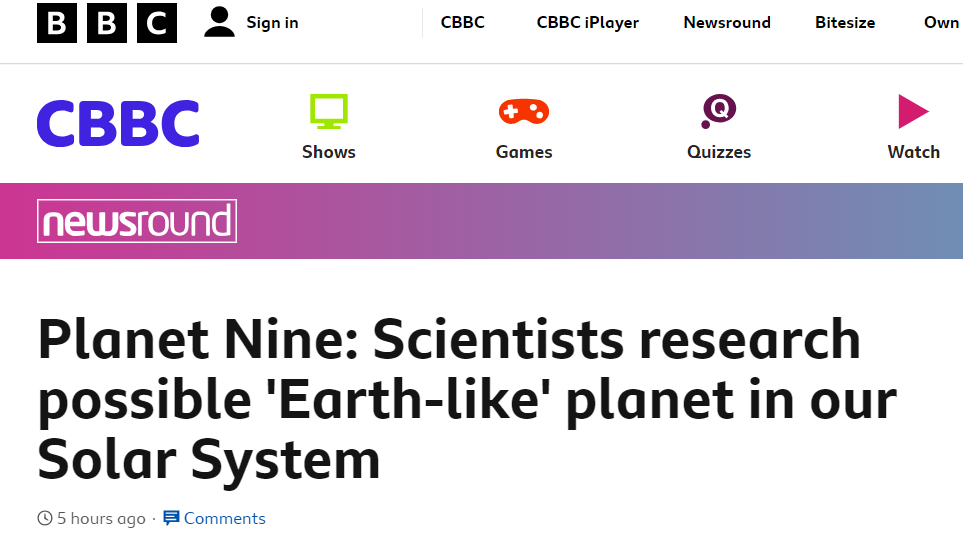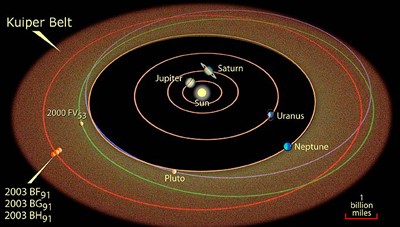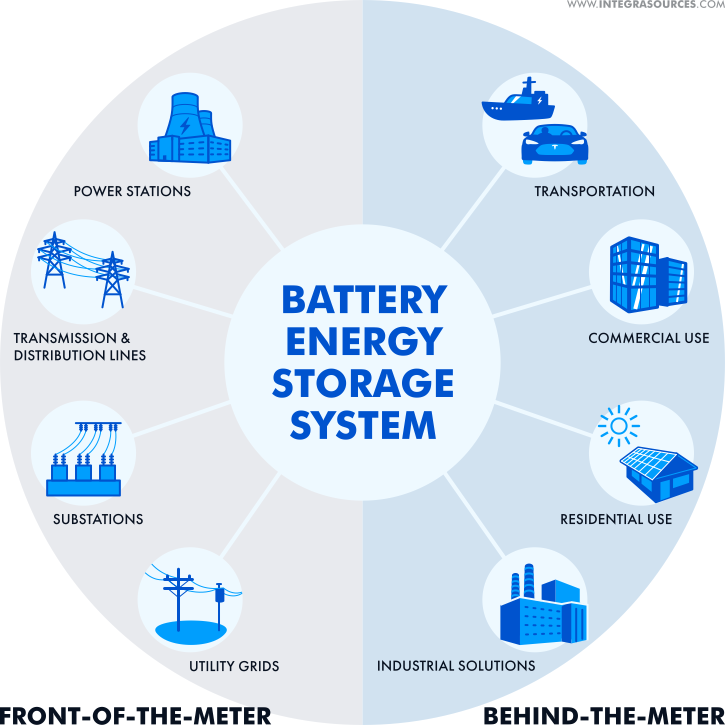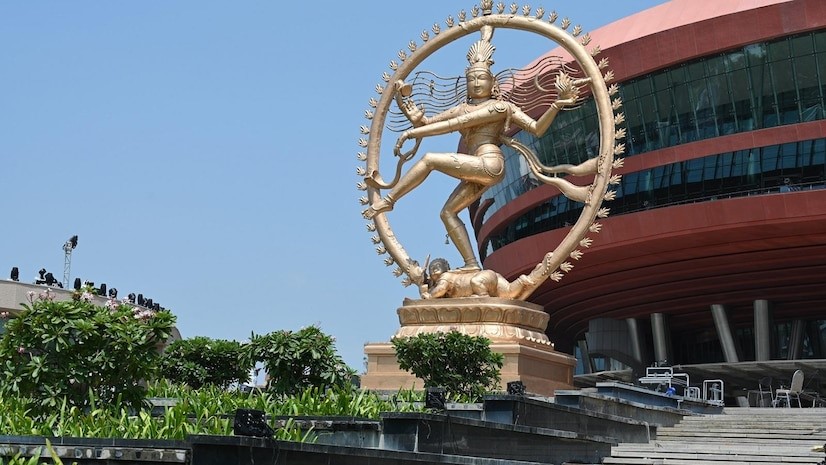Topics:
1. Laïcité: Principle of Secularism in France
2. Japan discovers Earth-like Planet in Kuiper Belt
3. NPCI Unveils Innovative UPI Features
4. Deciphering Atomic Nuclei: Exploring Unstable Nuclei via Electron Scattering
5. Battery Energy Storage System
6. Chola Sculpture and Architecture
LAÏCITÉ: PRINCIPLE OF SECULARISM IN FRANCE
Context:
- Recently, the French government made headlines by imposing a ban on the wearing of the abaya, a traditional Islamic robe, within state-run schools.
- This decision has been presented as a means of upholding Laïcité, which is France’s commitment to secularism.
- This move has elicited a spectrum of reactions, ranging from support to criticism, and has initiated a broader discourse on the role of Laïcité in contemporary France.
Understanding Laïcité
- Laïcité is a multifaceted and politically charged concept in France.
- It represents a formal separation between the State and the Church, emphasizing the complete exclusion of religious values from the public sphere, to be replaced by secular principles such as liberty, equality, and fraternity.
- Laïcité’s roots can be traced back to the struggle of anti-clerical Republicans against the influence of the Catholic Church.
Shifting Demographics and Associated Tensions
- For most of the 20th century, Laïcité was not a particularly contentious issue in France due to the country’s relative homogeneity.
- However, in the 1950s and 1960s, extensive decolonization efforts in North Africa resulted in a substantial migration of people from predominantly Muslim countries such as Tunisia, Morocco, and Algeria to France.
- This demographic shift occasionally sparked tensions and challenges related to Laïcité.
Controversial Legislation and Interpretations
- In 2004, France passed a law prohibiting the display of “ostentatious” religious symbols in public spaces, which encompassed Catholic attire, Jewish kippahs, and Muslim headscarves.
- In 2011, face-covering veils were banned in public places.
- Each of these decisions gave rise to new interpretations and discussions concerning Laïcité.
Comparing Laïcité with Indian Secularism
Historical Origins:
- Laïcité: Laïcité has deep historical roots in France and stands as a cornerstone of the French Republic.
- It was formalized with the enactment of the 1905 law on the Separation of Church and State.
Indian Secularism: The Preamble of the Indian Constitution proclaims India as a “Sovereign Socialist Secular Democratic Republic,” establishing the secular nature of the state.
The term ‘Secular’ was added to the preamble by the 42nd Constitution Amendment Act of 1976.
Characteristics:
- Laïcité: In France, Laïcité is characterized by a strict separation of religious institutions from the state, including the prohibition of religious symbols in public schools, government buildings, and the public domain.
- Indian Secularism: Indian secularism, as outlined in the Indian Constitution, is more inclusive of religious diversity.
The state does not separate itself from religion but is expected to treat all religions equitably and impartially.
The Indian government can offer financial support to religious institutions, and religious symbols are permitted in various public spaces.
- Drawn Inspiration from Indian Secularism
- Sarva Dharma Sambhava:
The Indian philosophy of secularism is intertwined with the concept of “Sarva Dharma Sambhava,” which denotes equal respect for all religions.
Indian secularism does not exclude religion from the public sphere but rather accommodates it in a manner that safeguards the rights of others.
- Protecting Minority Rights:
Indian secularism acknowledges the fundamental right to profess, practice, and propagate religion, provided it adheres to public order, morality, and health. It also safeguards the educational and cultural rights of minorities, permitting them to establish and manage their own institutions.
JAPAN DISCOVERS EARTH-LIKE PLANET IN KUIPER BELT
Context:
- Two Japanese astronomers have revealed compelling indications of a celestial body resembling Earth within our solar system.
- This enigmatic entity is thought to have occupied a position within the Kuiper Belt, a disc encircling the Sun beyond Neptune’s trajectory, encompassing various outer solar system entities.
Explanation of the Kuiper Belt:
- The Kuiper Belt, alternatively referred to as the Edgeworth-Kuiper belt, constitutes a flat assemblage of diminutive icy entities that orbit the Sun beyond the orbit of Neptune.
- Its conceptualization can be traced back to the 1950s when Gerard Kuiper, a Dutch-American astronomer, first hypothesized its existence.
- The Kuiper Belt consists of a multitude of frigid objects, collectively known as Kuiper Belt objects (KBOs) or trans-Neptunian objects (TNOs), and is regarded as a vestige from the nascent phases of our solar system.
- It is regarded as the presumed source of numerous short-period comets, which complete orbits around the Sun in less than two decades.
- This region predominantly comprises petite icy bodies, encompassing dwarf planets, asteroids, and comets.
- Notably, Pluto, formerly designated as the ninth planet, gained prominence within the Kuiper Belt but was reclassified as a dwarf planet by the International Astronomical Union (IAU) in 2006, largely due to its location within this belt.
The Astronomers’ Discoveries:
- The Japanese scientists propose the potential existence of a planet akin to Earth, estimating its dimensions to range from 1.5 to 3 times that of our own planet.
- This revelation challenges previous conjectures regarding the existence of a remote “Planet Nine” and opens up the prospect of a planet in closer proximity to us, residing within the Kuiper Belt.
- These astronomers anticipate the presence of an Earth-like planet and a selection of trans-Neptunian objects (TNOs) following distinctive orbits, which could serve as observational indicators of this prospective planet’s gravitational influences.
- They project that this planet may be positioned at distances ranging from 200 to 500 astronomical units (AU) from the Sun, inclined at an angle of approximately 30 degrees.
To offer a point of reference, Pluto is located at a distance of 39 AU from Earth.
NPCI Unveils Innovative UPI Features
Context
The National Payments Corporation of India (NPCI) has introduced a series of innovative features on the widely-used Unified Payments Interface (UPI) platform.
Voice-Enabled UPI Payments
- NPCI’s latest addition to UPI, known as Hello! UPI, brings voice-enabled UPI payments in both Hindi and English languages.
- This revolutionary feature empowers users to perform UPI transactions using voice commands, accessible through various channels, including mobile apps, telephone calls, and Internet of Things (IoT) devices.
- Future plans involve expanding this capability to encompass multiple regional languages, thereby enhancing inclusivity.
Credit Line on UPI: Simplifying Credit Access
- Under the leadership of the RBI Governor, NPCI has introduced the Credit Line on UPI initiative, designed to promote financial inclusivity and innovation.
- This offering enables users to access pre-approved credit from banks through UPI, streamlining the credit acquisition process.
- The package includes interest-free credit periods, transparent charges, and seamless customer engagement channels, all geared toward expediting credit access, boosting economic growth, and improving digital banking efficiency.
UPI LITE X: Offline Money Transfers
- UPI LITE X introduces offline money transfers, allowing users to send and receive funds even without an active internet connection.
- This feature proves invaluable in areas with poor network coverage, where UPI LITE payments stand out for their speed and efficiency, making them a preferred choice for users.
UPI Tap & Pay: Redefining Convenience
- With UPI Tap & Pay, users have a new way to complete payments at merchant locations.
- In addition to the conventional scan-and-pay method, users can now simply tap Near Field Communication (NFC)-enabled QR codes.
- This enhancement significantly improves convenience, making transactions swift and effortless.
Conversational Payments: AI-Enhanced Transactions
- Conversational UPI Payments and Conversational Bill Payments represent a significant shift in human-machine interaction.
- These AI-driven transactions aim to encourage the adoption of digital payments throughout India.
- Users can now make voice-enabled UPI payments in Hindi, English, and regional languages through UPI Apps, telecom calls, and IoT devices.
- NPCI has partnered with AI4Bharat at IIT Madras to develop language models for Hindi and English payments.
BillPay Connect: Streamlined Bill Payments
- BillPay Connect introduces a standardized number for bill payments across India.
- Customers can conveniently fetch and pay their bills through messaging apps with a simple ‘Hi.’
- Even users without smartphones or immediate data access can settle their bills via a missed call, followed by a verification call.
- Voice-assisted bill payments through smart home devices add an extra layer of convenience and provide instant confirmation.
- This innovation enhances security and reassurance for both customers and bill collection centers.
Conclusion
NPCI’s introduction of these innovative features represents a significant advancement in India’s digital payment landscape.
These features not only enhance accessibility but also redefine convenience, making digital transactions more user-friendly.
With pioneering offerings such as voice-enabled payments and streamlined credit access, NPCI continues to play a pivotal role in advancing India’s technology landscape.
These game-changing UPI features mark a giant stride toward a digitally empowered India.
DECIPHERING ATOMIC NUCLEI: EXPLORING UNSTABLE NUCLEI VIA ELECTRON SCATTERING
Context:
- In the realm of atomic and nuclear physics, the pursuit of unraveling the mysteries inherent to matter’s inner workings has been an ongoing voyage of discovery.
- Scientists have tirelessly endeavored to reveal the enigmas concealed within atomic nuclei, and recent progress in experimental methodologies has propelled us closer to this overarching objective.
Historical Milestones:
- A century and a half ago, pioneers in the scientific community such as Ernest Rutherford, Hans Geiger, and Ernest Marsden conducted groundbreaking experiments involving the exposure of a thin gold foil to radiation.
- These experiments unveiled the existence of a dense central nucleus within every atom, where both mass and positive charge are concentrated.
- Seven decades ago, physicist Robert Hofstadter spearheaded a team that bombarded thin foils with high-energy electrons, providing scientists with the means to probe the inner structure of atomic nuclei.
Recent Advancements:
- In a notable development, researchers at Japan’s RIKEN Nishina Center for Accelerator-Based Science have introduced a novel setup employing electron scattering to investigate unstable nuclei.
- This innovative approach opens up fresh avenues for comprehending the fundamental building blocks of matter.
- The SCRIT (Self-Confining Radioactive-isotope Ion Target) setup represents a notable advancement compared to previous experiments employing thin foils.
- SCRIT has the capability to immobilize caesium-137 atom nuclei, facilitating electron interactions—a pivotal breakthrough.
The Experimental Process:
- The experimental procedure involves the acceleration of electrons in a particle accelerator to imbue them with energy.
- These energized electrons are then directed at a block of uranium carbide, resulting in the generation of a stream of caesium-137 ions (atoms devoid of electrons).
- These ions are subsequently transported to the SCRIT system, which detains target ions along the path of the electron beam through the application of electric attractive forces.
- This spatial “overlap” ensures a heightened likelihood of electron-ion collisions.
Probing Nuclear Structure:
- A profound comprehension of the experimental setup necessitates an exploration of interference patterns.
- Just as when light traverses a small aperture, it generates concentric circles of light and dark regions due to interference, when an electron scatters off an atomic nucleus, it behaves as a wave during the interaction, yielding interference patterns.
- To record these patterns, a magnetic spectrometer is employed, offering advantages in terms of precise and well-regulated interactions.
Results and Implications:
- The outcomes of the experiments validate the internal structure of the caesium-137 nucleus, corroborating earlier studies and theoretical calculations.
- The true significance lies in the development of the “femtoscope,” a tool capable of probing the femtometer scale (10^-15 meters) of atomic nuclei. This breakthrough unlocks novel prospects in nuclear physics.
Unresolved Nuclear Structure:
- The challenge confronting nuclear physics is the absence of a unified theory that elucidates the structure of atomic nuclei, despite the existence of several established models.
- Scientists grapple with intriguing phenomena, such as the “island of stability,” where heavier nuclei of unstable elements deviate from the expected trend of rapid decay through radioactivity.
- This enigma prompts profound inquiries concerning nuclear structure and the existence of stable clusters.
Future Prospects:
- Researchers aspire to utilize femtoscopes to investigate nuclei characterized by irregular shapes, thereby bridging the gap between anticipated and unforeseen nuclear structures.
This endeavor holds the promise of shedding light on the fundamental nature of atomic nuclei and advancing our comprehension of the universe at its most elemental level.
Battery Energy Storage System
Context:
The Cabinet has granted approval for Viability Gap Funding with the objective of fostering the growth of Battery Energy Storage Systems (BESS).
- The Union Cabinet has given its nod to the “Scheme for Viability Gap Funding (VGF) for the advancement of Battery Energy Storage Systems (BESS).”
- The primary goal of this scheme is to facilitate the development of 4,000 MWh of BESS projects by 2030-31 through a competitive bidding process.
- The scheme provides a financial boost of up to 40% of the capital cost in the form of budgetary support via VGF.
- Its underlying purpose is to curtail storage expenses for distribution companies and consumers alike.
- The initial allocation for this scheme stands at Rs. 9,400 crore, with a budgetary commitment of Rs. 3,760 crore.
- The ultimate objective is to achieve a Levelized Cost of Storage (LCoS) ranging from Rs. 5.50-6.60 per kWh, making stored renewable energy an economically feasible choice.
- The disbursement of VGF will be done in five installments, tied to various stages of BESS project implementation.
- Distribution Companies (Discoms) will have access to a minimum of 85% of the BESS project’s capacity, enhancing the integration of renewable energy and minimizing wastage.
- BESS developers will be chosen through a competitive bidding process, fostering competition and encouraging investment.
This initiative aligns with the government’s commitment to promoting clean and sustainable energy solutions.
Battery Energy Storage Systems (BESS):
- These systems are engineered to store energy generated from renewable sources such as solar and wind.
- BESS enables the efficient storage and release of renewable energy, aligning it with electricity demand.
- Lithium-ion batteries serve as the predominant technology employed in BESS for large-scale applications.
4. BESS plays a crucial role in ensuring a dependable supply of renewable energy to the electricity grid while balancing energy supply and demand.
- Operational Process:
– Charging with Renewable Energy: BESS stores energy generated from sources like wind and solar power.
– Intelligent Software: Advanced algorithms manage energy production and determine the optimal times for charging and discharging.
– Computerized Control: Control systems make decisions based on electricity demand and grid conditions.
– Peak Demand Management: During periods of high demand, BESS releases stored energy, thereby reducing costs.
– Cost Efficiency: BESS optimizes energy supply, decreasing the reliance on expensive energy sources.
– Domestic Application: Similar principles are applicable to home energy storage systems, enabling the efficient utilization of renewable energy.
Chola Sculpture and Architecture
Context:
- In the context of the upcoming G20 meeting at the Bharat Mandapam, a Nataraja Statue is prominently displayed.
- This statue represents Nataraja, the cosmic dancer, who embodies Lord Shiva and is commonly found in metal or stone sculptures within Shaivite temples, particularly in the southern regions of India.
- It holds great significance as a masterpiece of Chola sculpture.
The Nataraja sculpture features several symbolic elements:
- The upper right hand holds a drum, symbolizing the sound of creation, which emanates from the damru’s sound.
- The upper left hand holds eternal fire, representing destruction, the counterpart of creation.
- The lower right hand is positioned in Abhay mudra, signifying blessings and the dispelling of fear.
- The lower left-hand points to the upraised foot, indicating the path to salvation.
- Lord Shiva is depicted dancing on a dwarf, symbolizing ignorance and ego.
- Shiva symbolizes the source of all cosmic movement and performs the doomsday dance, represented by arching flames during the universe’s dissolution.
- His matted hair symbolizes the flow of the river Ganges.
- Unique ornamentation includes a male earring in one ear and a female earring in the other, symbolizing the fusion of male and female aspects, known as Ardhanarishvara.
- Chola sculptures, known for their elegance and intricate details, can be observed at the Brihadisvara temple in Tanjavur, which serves as an excellent example of mature Chola temple sculpture with gracefully modeled figures and delicate ornamentation.
- The influence of Chola art extended beyond India’s borders, reaching places like Java and Sumatra.
- An exemplary Chola craftsmanship piece from the 11th century portrays Lord Shiva in a fierce dance after defeating an elephant demon.
- In the 13th century, Chola art continued to evolve, featuring sculptures of Bhudevi, the earth goddess, as the younger consort of Vishnu.
- Chola architecture thrived under their patronage, leading to the construction of numerous temples, including the prestigious ones at Thanjavur, Gangaikonda Cholapuram, and Darasuram.
- These temples not only showcased remarkable temple architecture but also housed sculptures, paintings, and Chola arts iconography.
- Temples became focal points for various aspects of society, serving as hubs for social, economic, cultural, and political activities. They were attended by officials, dancers, musicians, singers, and priests, mirroring the royal court.
- Early Chola temples were characterized by their architectural simplicity, with some sepulchral temples built to honor the burials of kings.
- The Brihadeeshvarar Temple in Thanjavur stands as a magnificent exemplar of Chola architecture, boasting a 190-foot vimana.
- Inside, fresco paintings and miniature sculptures vividly depict scenes from puranas and epics.
Gangaikonda Chozhapuram, constructed by Rajendra I, commemorates his victory in North India and features sculptures of various deities.
The Darasuram Temple, built by Rajaraja II, is renowned for its miniature sculptures depicting incidents from Periyapuranam on the sanctum’s wall.






